AI at Work
AI-Generated Image Variations: Scaling Marketing Visuals for Global Markets

Akshita Sharma · Content Marketing Associate
April 29th, 2025 · 9 min read

Global brands face a creative marathon every day. Their marketing teams race to produce visuals that feel as authentic in Mumbai as they do in Milwaukee, as relevant in São Paulo as in Singapore. This isn't just about translation - it's about visual resonance that builds genuine connections across cultural boundaries.
The challenge is significant: how do you create marketing imagery that speaks authentically to diverse consumers while maintaining brand consistency? And how do you scale this efficiently across dozens of markets without multiplying your budget and timeline?
The solution lies in AI-powered image generation and adaptation technologies that can understand cultural nuances while preserving brand identity. These innovative tools are transforming how global brands approach visual storytelling, offering both the flexibility and efficiency needed to succeed in the global marketplace.
The power of visuals in global marketing campaigns
How to scale marketing visuals for global markets
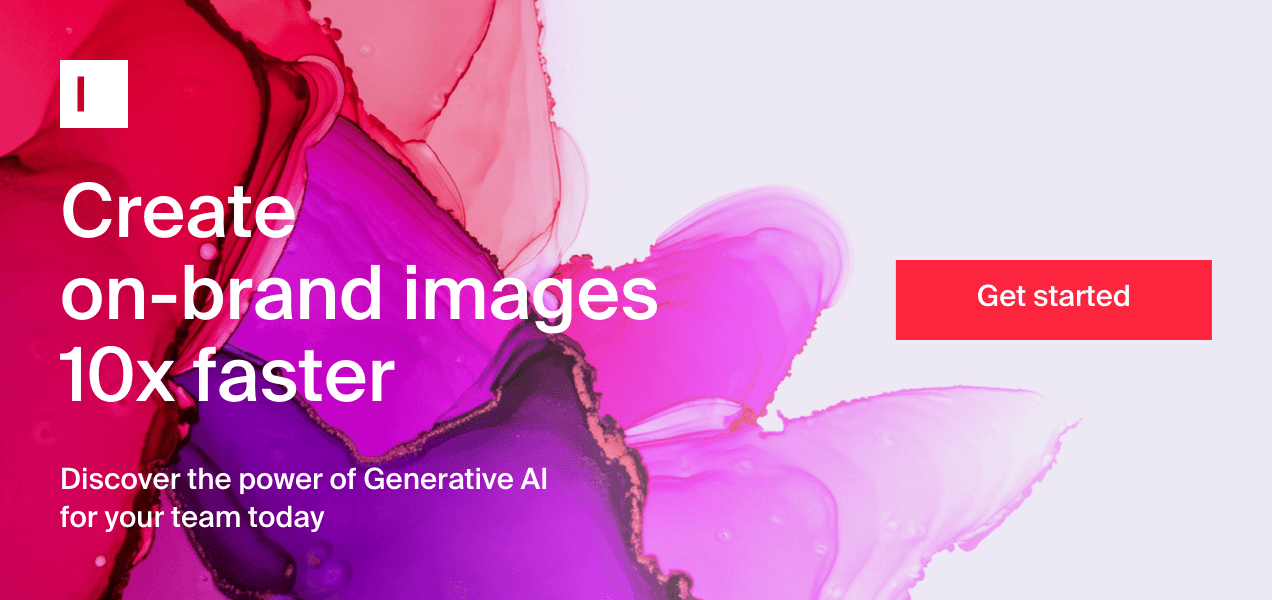
The power of visuals in global marketing campaigns
The battle for consumer mindshare demands visual stories that connect with diverse cultural contexts while meeting demanding timelines and scale requirements. For enterprise marketing leaders facing the dual imperatives of global scale and local relevance, traditional methods of creating marketing visuals have become an operational liability. AI offers a powerful alternative, allowing marketing teams to swiftly customize and produce culturally relevant marketing visuals.
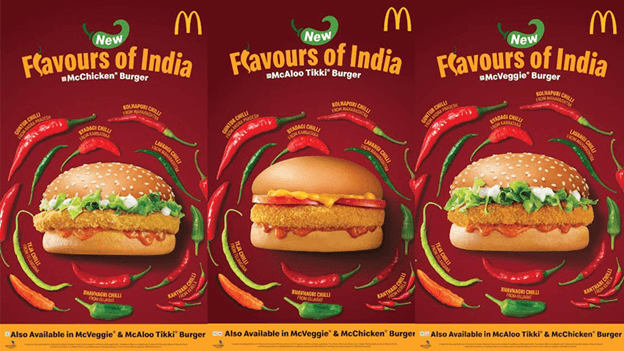
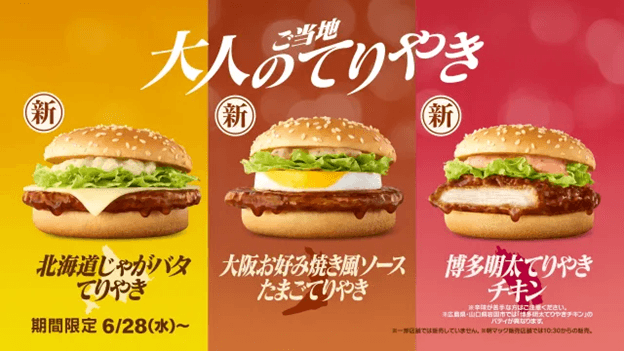
Why traditional methods fall short for global visual marketing
Conventional approaches to global visual marketing typically follow one of two paths:
The one-size-fits-all approach: Using identical visuals across all markets, perhaps with translated text. While efficient, this approach ignores cultural nuance and often creates disconnect with local audiences.
The full localization approach: Creating entirely new visual assets for each market. While culturally sensitive, this approach is prohibitively expensive, time-consuming, and often leads to brand inconsistency.
Neither option adequately serves global marketing teams who need both scale and relevance. Additionally, standard photography and design workflows face particular challenges:
Inflexible assets: Once a photoshoot is complete, changing elements to match cultural preferences requires expensive reshoots or complex editing.
Geographic limitations: Capturing authentic local environments requires on-location shoots in each target market.
Cultural expertise gaps: Marketing teams may lack a deep understanding of visual preferences across diverse markets.
Seasonal and contextual limitations: Capturing imagery appropriate for different seasons, holidays, and cultural moments requires extensive planning and resources
AI image generation: The bridge between global scale and local relevance
AI-powered image generation offers an approach that overcomes these limitations. At Typeface, we've developed an AI solution specifically designed for global enterprise needs. Typeface provides marketers with an intuitive, visual approach for creating visuals that allows for detailed geo and brand-specific customizations. You can seamlessly swap products, adjust color palettes, add or remove elements, and create multiple image variations that speak directly to different market segments in different regions. This reduces the need for manual replication and customization.
For example, a beverage company can maintain consistent product representation—bottle shape, label design, brand colors—while adapting serving contexts, accompaniments, and settings to align with regional preferences. This capability allows marketing teams to:
Show the same drink with seasonal serving styles appropriate for different hemispheres (iced in summer markets, warm presentations in winter markets)
Place beverages alongside locally relevant food pairings that resonate with regional cuisines
Adapt to local celebrations and cultural moments without additional production
This is an example of an ad concept for a beer brand created using Typeface, which was specifically tailored for the UK market.

Our AI doesn't just generate images—it understands your image style and preserves crucial product details, rendering realistic shadows, reflections, and textures to create realistic marketing visuals for global markets. Typeface can also help edit AI-generated photos, automatically adjusting lighting, correcting colors, and removing unwanted elements to ensure that every image aligns with brand standards. This level of automation is invaluable for businesses looking to maintain consistent visual content across numerous platforms.
How to scale marketing visuals for global markets
Let's explore how to scale marketing visuals for global markets with a little help from Typeface's AI marketing platform:
Step 1. Research different markets and create audience segments for each
Before diving into visuals, you need to understand your target audience across markets. Each region carries its own cultural signatures, preference patterns, and value systems that fundamentally alter how your content resonates. During audience research, move beyond surface-level demographic data to gather market-specific data that identifies the cultural frameworks and behavioral patterns that define each priority region.
💡Tip: Understanding different markets is crucial, but equally important is how you allocate resources across these diverse markets. According to a Forrester report, enterprises should ideally align visual localization investments directly with their strategic GTM priorities, concentrating resources on high-growth potential regions rather than pursuing the false economy of universal coverage that ultimately dilutes impact.
Once you have collected audience data, you can use Typeface to transform this market intelligence into actionable image personalization at scale. With Audiences, you can build comprehensive audience profiles with granular demographic, psychographic, and other details, and then systematically apply these insights across your generated content.
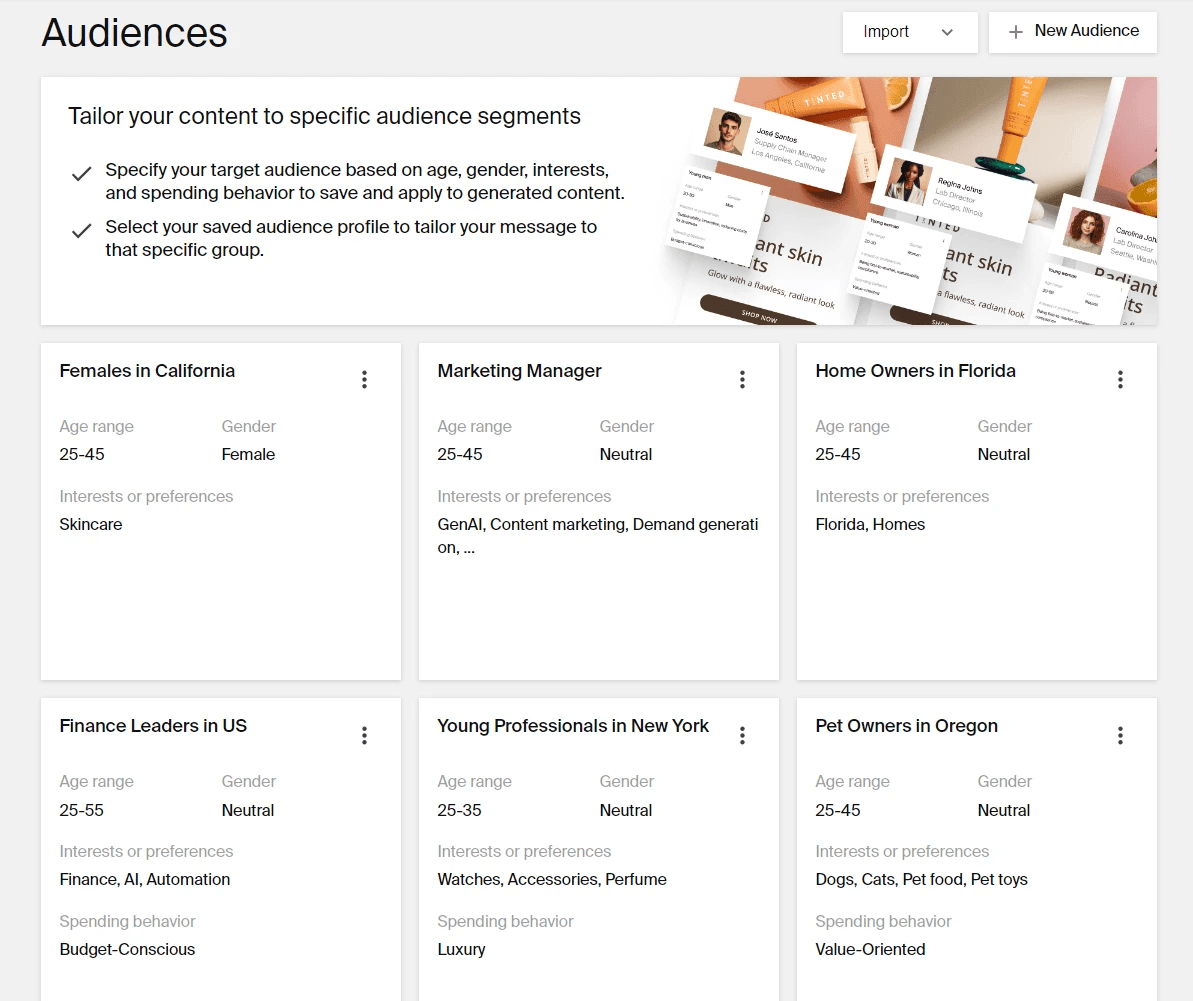
The platform's AI engine calibrates both messaging and marketing visuals to align with segment-specific preferences and priorities with remarkable accuracy. For organizations with established segmentation frameworks, Typeface also offers frictionless integration with your existing CDP platforms, preserving your segmentation investments while extending their application.
Step 2. Localize the content and design with AI
Once your audience segments are in place, the next step involves adapting your visual content to meet each region's cultural and linguistic nuances. Typeface offers multiple AI tools that work together to streamline this process.
Visual Inspiration Studio accelerates the design process, helping you pivot between markets without sacrificing authenticity, while maintaining your distinctive visual style. With this tool, you can approach localization through several flexible pathways:
Preset Inspiration Libraries: Browse through a curated gallery of inspirational images organized by use case, industry, and region. For example, when searching for London-specific imagery, the platform instantly surfaces content featuring iconic architecture, distinctive weather patterns, and British cultural touchpoints that would resonate with UK consumers.
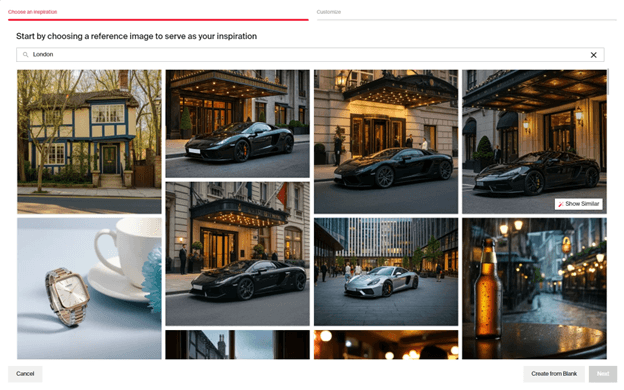
By contrast, a search for California generates sun-drenched landscapes, coastal imagery, and distinctly West Coast cultural markers
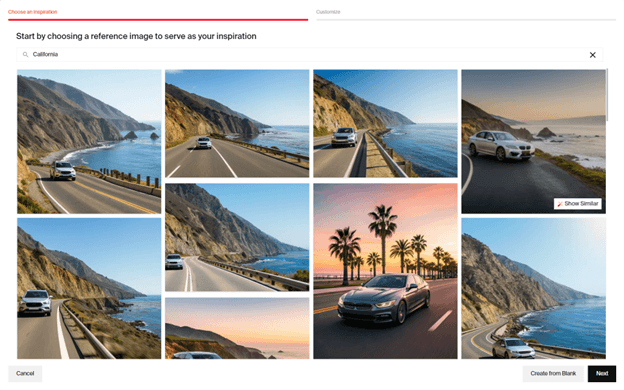
Prompt-Based Generation: For more control over visual content localization, specify your target market and any critical cultural elements directly in your AI image prompts. Simply describe the setting ("busy Mumbai street market" or "Scandinavian minimalist kitchen") while maintaining your product focus.
Image Remixing: Upload your own successful campaign images and use them as a foundation for localized variations. This approach allows you to maintain what works in your original visuals while adapting specific elements for cultural relevance. You might keep product placement and composition while changing environments, people, and cultural touchpoints to reflect local preferences.
Separately, Typeface's Ad Agent takes a different approach to localization to generate multiple ad variations tailored to your unique audience segments or markets. With Ad Agent, you can:
Import existing ad templates and automatically adapt them for different markets
Maintain your design framework while localizing text with appropriate translations
Adjust visual elements to align with regional preferences
Ensure brand consistency across all variations
Scale production of market-specific ads without rebuilding from scratch
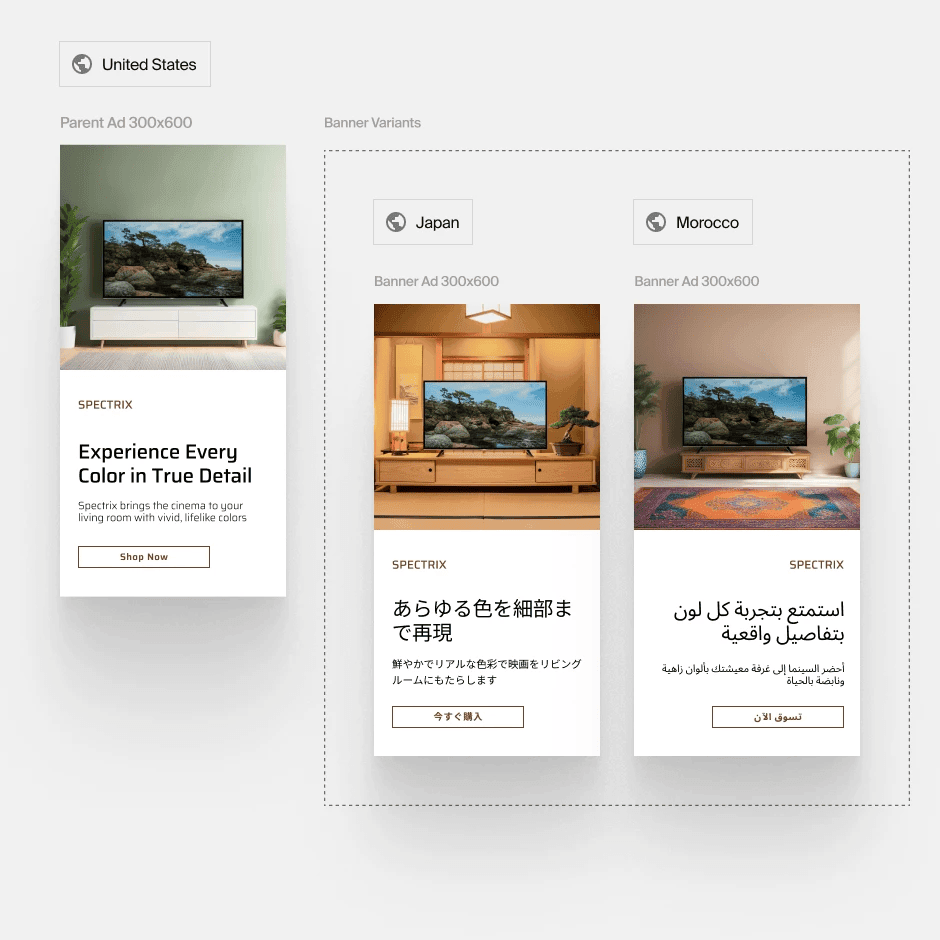
Once you've selected your approach in either tool, simply add your brand kit, selecting colors and image styles you've trained the AI on. This is also where you can apply the audience segment you created in the first step to ensure your visuals are customized to meet their unique preferences.
Step 3. Test and iterate
Visual preferences evolve differently across markets, requiring ongoing optimization. Establish a structured testing framework to continuously refine your visual approach:
Test specific visual elements—from cultural settings to consumption occasions—to understand which drive engagement in each market
Track performance metrics by visual style and cultural context, not just by campaign
Feed insights back into your AI generation parameters to continuously improve relevance.
By leveraging your marketing technology stack to automate this testing process, you can implement a continuous visual optimization cycle across all markets while maintaining centralized oversight.
Building your global visual engine with Typeface
The most successful global brands understand that visual localization isn't simply translation—it's transformation. Each image must simultaneously carry your brand's universal values while speaking the unique visual language of each market.
As markets become increasingly interconnected yet culturally distinct, the brands that thrive will be those that can move beyond one-size-fits-all approaches without drowning in production complexity. They'll use AI not just to reduce costs, but to enhance relevance—creating deeper connections with consumers across every market they enter.
Try Typeface today and experience firsthand how our AI marketing platform can transform your approach to scaling marketing visuals for global marketing. For teams with specific requirements, schedule a demo with our solutions specialists who can show you how Typeface integrates seamlessly with your existing marketing stack and workflows.
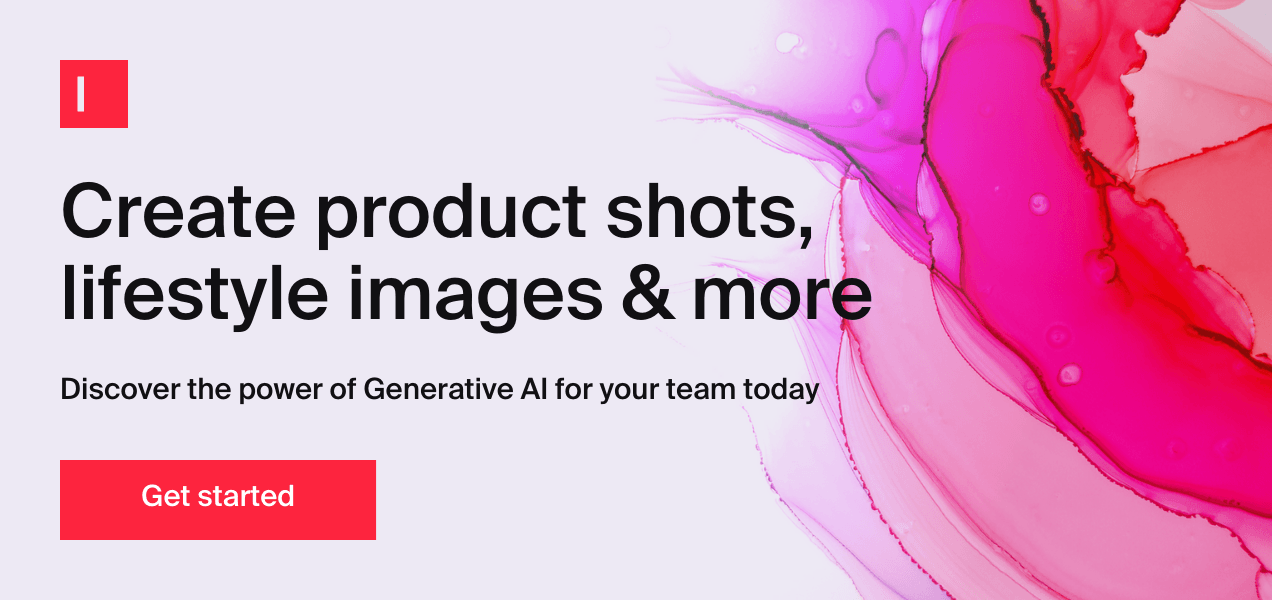
Share
Related articles
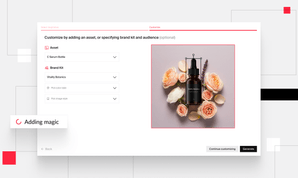
Product
Beyond Prompts: A New Way to Ideate and Create Using Images in Visual Inspiration Studio

Frank Chen · Product Manager
October 9th, 2024 · 6 min read

AI at Work
How to Use AI Image Generators to Create Studio-Quality Brand Photos at Scale

Akshita Sharma · Content Marketing Associate
July 21st, 2025 · 14 min read

AI at Work
How to Use AI Image Generation Tools to Create Holiday Banners for Landing Pages and Ads

Neelam Goswami · Content Marketing Associate
November 27th, 2024 · 16 min read